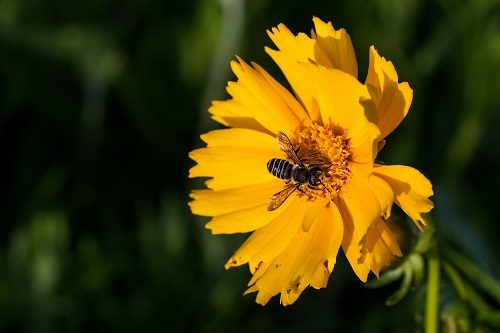by Jennifer Odom
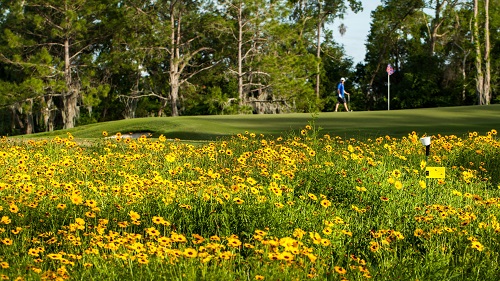
Really? By planting certain flowers on our golf course’s out-of-play areas, the golf course can actually reduce the presence of harmful insects? Yes! The very ones that gobble up the golf course grass, and the ones we’ve been dumping all the pesticides on.
That is exactly what a study by Dr. Adam Dale (Assistant Professor and Extension Specialist, Turf and Ornamental Entomology at the University of Florida), and students Rebecca Perry and Grace Cope, set out to determine.
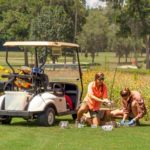
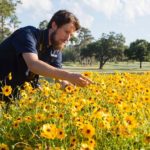
The study’s three goals were to see how these plantings would affect the conservation of vital pollinators (bees, butterflies, and other needed species), how they would affect the pests’ natural enemies (predators ), and if that translated into reduced pests (like turf worms).
It absolutely did. Pollinators and pollinator diversity increased.
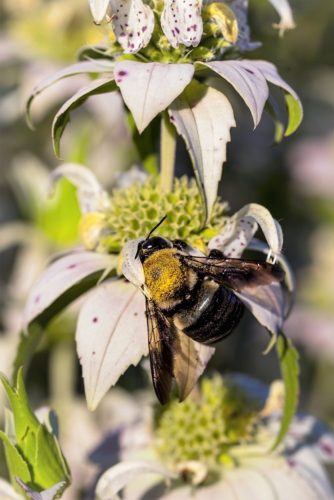
Biological control of pests increased. ( In other words, pests decreased).
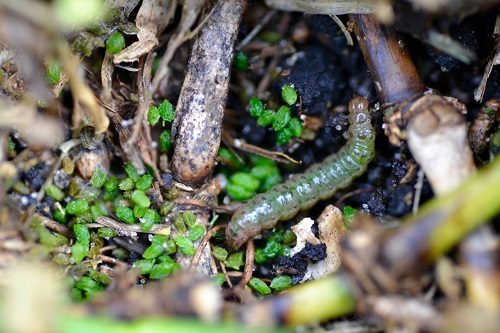
Think of it. Reduced pesticides!
Did you know that 40-70% of golf course acreage is out-of-play? What a huge opportunity!
And there are other benefits.
According to Matthew Borden, MS Entomology and Doctor of Plant Medicine Student at the University of Florida, “…careful selection of plant choices, including native species, can translate to significant savings for the golf course.”
Besides the reduction in the need for pesticides, other likely economic benefits would include reduced mowing and irrigation areas. In Borden’s article Golf Courses as a Source of Habitat Conservation in the Urban Landscape, he cites several golf courses in arid regions of our country who have saved a million gallons a year each by optimizing their natural landscape.

Not only that, golfers would enjoy a beautiful flowerscape all year, thanks to the wise selection of flowers.
As Floridians, many of us are stunned, even frightened at the rapid building and urbanization of the Florida landscape.
Directly related to that, imagine the impact all this building has on our native wildlife. The natural Florida we once knew is disappearing into roads, concrete, and the cutting off the wildlife corridors (paths for native animals). This creates a desperate predicament by shoving the wildlife into a corner and endangering animal lives.
Imagine our 1,100 Florida golf courses and 525 golf communities. The proposed natural areas across this great span could alleviate part of this problem by allowing a series of natural corridors to connect over a great many acres.
The simple measures above are an easy way to return a portion of what’s been taken away from all of us.
What can we do?
Fortunately, golf superintendents who collaborated with the UF/IFAS Dale Lab, demonstrated an eagerness in finding ways to reduce environmental impacts and to provide environmental benefits. Yours could, too.
First, learn more (see the links below).
Second, talk up the ideas with other golfers and golf superintendents. Remember, the educated public knows it is NOT cool to waste natural resources like water, over-use pesticides, or obliterate animal habitats and corridors. Golf courses have long been scorned for doing just that, and for hurting the environment. They can redeem themselves through cooperation.
Third, show your superintendent how to be part of the solution. Encourage him to become pro-active, to become a leader in conservation, and to keep track of changes and resulting savings. Encourage him to publicize his efforts and successes and to stand tall as a leader.
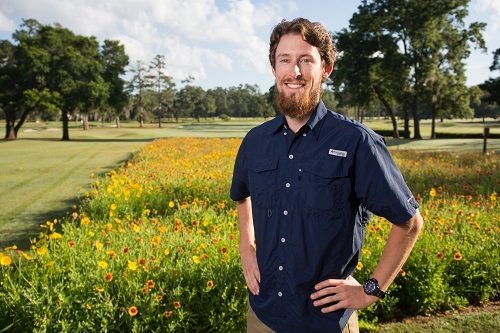
Where will Dr. Dale’s research go from here? “We are currently working on publishing this research in a multitude of formats,” he says. His purpose is to “reach as many people and as diverse an audience as possible.”
He added that his team has started new projects…investigating monarch butterfly conservation habitat strategies and plant species that do well in wetland habitats that will also provide conservation and ecological benefits.”
How is Dr. Dale reaching the greater public with these creative ideas? “We are traveling around the state giving presentations about the research results and methods to golf course superintendents. We are also publishing this information…and working with IFAS Communications to publicize and market these practices.”
It’s a great idea and I hope it spreads like wildfire.
If you’d like to get on board to spread this information, contact him:
Dr. Adam Dale, agdale@ufl.edu. Or view his website, Landscape Entomology at UF, https://dalelab.org/
Golf Course Ecology https://dalelab.org/golf-course-ecology/
http://1000friendsofflorida.org/florida2070/
